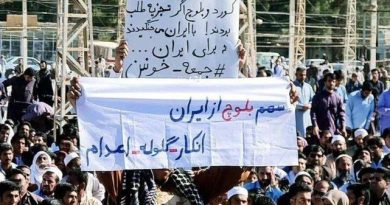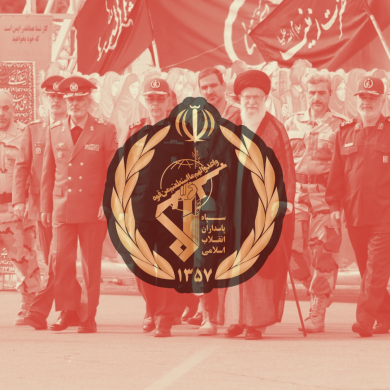In the fight for freedom and equality, Iranian women have turned social media into a powerful tool against oppression, censorship, and state violence. While the Islamic Revolutionary Guard Corps (IRGC) and the Iranian government have long controlled traditional media, digital platforms have given Iranian women a voice that cannot be easily silenced.
The “Women, Life, Freedom” movement, ignited by the death of Mahsa Amini in 2022, was largely fueled by viral videos, hashtags, and online activism. Despite internet blackouts, digital surveillance, and cyber attacks by the IRGC, Iranian women continue to use social media as a weapon to expose state brutality, organize protests, and gain global solidarity.
This article explores:
• How Iranian women use social media to challenge the IRGC’s oppression.
• The tactics the IRGC uses to suppress digital resistance.
• The impact of online activism on global awareness and support.
• How the world can support Iranian women’s digital fight for freedom.
1. Social Media as a Tool of Resistance
A. Amplifying Voices of Protest
Social media has enabled Iranian women to:
• Share real-time footage of protests, police brutality, and human rights violations.
• Spread hashtags like #WomenLifeFreedom, #MahsaAmini, and #FreeIran, keeping the movement alive globally.
• Connect with global activists, journalists, and human rights organizations, ensuring that their stories reach the world.
Examples of Viral Resistance:
• Videos of women removing their hijabs in defiance of compulsory hijab laws have gained millions of views.
• Footage of violent crackdowns by the IRGC has exposed the state’s brutality and led to international condemnation.
• Online campaigns have helped pressure governments to impose sanctions on Iranian officials responsible for human rights abuses.
B. Organizing and Mobilizing Protests
Social media is not just a platform for awareness but also a tool for action. Protesters in Iran use Telegram, Twitter, and Instagram to:
• Coordinate demonstrations despite state surveillance.
• Share safe routes for protesters to avoid security forces.
• Alert activists about IRGC checkpoints and potential dangers.
Despite internet shutdowns, Iranian women find alternative ways to keep communication channels open, such as VPNs, encrypted messaging apps, and satellite internet tools.
C. Exposing the IRGC’s Tactics of Repression
Iranian women use social media to document and expose the IRGC’s brutality, including:
• Arrests and torture of activists, journalists, and protesters.
• Sexual violence against detainees as a tool of intimidation.
• Forced confessions aired on state TV.
By posting first-hand accounts of these abuses, Iranian women counter the regime’s propaganda and show the world the reality of state repression.
2. The IRGC’s Digital Crackdown: How the Regime Fights Back
While social media empowers women, the IRGC and Iranian government have intensified their digital warfare to suppress online resistance.
A. Internet Blackouts and Censorship
The IRGC frequently shuts down the internet during protests to:
• Prevent activists from communicating and organizing demonstrations.
• Block videos of state violence from reaching international audiences.
• Disrupt connections between Iranian activists and the global community.
During the 2022 protests, Iran imposed nationwide internet blackouts, yet activists adapted quickly by using VPNs and decentralized networks.
B. Cyber Surveillance and Arrests
The IRGC’s Cyber Intelligence Unit monitors:
• Social media posts critical of the government.
• Private messages of activists.
• Foreign journalists and Iranian exiles who report on Iran’s resistance.
Iranian women have been arrested, tortured, and sentenced to long prison terms simply for:
• Posting hijab-free photos on Instagram.
• Sharing protest footage on Twitter.
• Writing about human rights abuses on social media.
Example:
• Niloofar Hamedi, the journalist who broke the news of Mahsa Amini’s death, was arrested for reporting the truth.
C. Fake News and Propaganda Campaigns
The IRGC uses bots, fake accounts, and disinformation campaigns to:
• Discredit activists and protesters.
• Spread false narratives blaming protests on “foreign conspiracies.”
• Create fear by posting fake threats against women who resist.
Despite these efforts, Iranian women’s digital activism continues to outmaneuver the regime’s online repression.
3. The Global Impact of Iranian Women’s Digital Resistance
A. Inspiring Worldwide Protests and Solidarity
The online activism of Iranian women has inspired:
• Mass demonstrations in cities worldwide, from London to New York.
• The #WomenLifeFreedom movement, uniting feminists and human rights defenders globally.
• Increased media coverage on Iranian women’s struggles, forcing governments to respond.
B. Pressuring Governments to Act
Social media activism has led to:
• Sanctions on Iranian officials involved in human rights violations.
• Global petitions demanding the release of political prisoners.
• International recognition of Iran’s women-led movement.
Example:
• The European Parliament voted to consider designating the IRGC as a terrorist organization after massive online pressure.
C. Connecting Iranian Women with Global Feminist Movements
Iranian women’s fight is now linked to global struggles for women’s rights, reinforcing:
• The fight against gender apartheid.
• The demand for bodily autonomy and freedom of choice.
• A new era of transnational feminist solidarity.
By exposing oppression, Iranian women have forced the world to listen and act.
4. How the World Can Support Iranian Women’s Digital Fight for Freedom
A. Amplify Their Voices
• Share content from Iranian activists on social media.
• Use hashtags like #WomenLifeFreedom #MahsaAmini #FreeIran.
• Follow Iranian journalists and human rights defenders to stay informed.
B. Protect Digital Freedom
Governments, tech companies, and activists must:
• Provide VPNs and encrypted messaging apps for Iranians.
• Support satellite internet access to bypass blackouts.
• Pressure social media platforms to protect Iranian users from cyber threats.
C. Sanction IRGC Cyber Units
• Governments should impose sanctions on the IRGC’s Cyber Intelligence Unit, which conducts online surveillance, arrests, and propaganda campaigns.
• Tech companies must limit IRGC-affiliated accounts spreading disinformation.
D. Advocate for the Release of Imprisoned Digital Activists
• Human rights groups must campaign for the release of journalists and online activists imprisoned for digital resistance.
• Governments must grant asylum to Iranian women at risk for their activism.
Conclusion: The Fight Continues
The IRGC’s digital warfare may attempt to silence Iranian women, but their voices cannot be erased. Through social media, encrypted communication, and global solidarity, Iranian women continue to:
✔ Expose oppression.
✔ Organize resistance.
✔ Inspire change.
Despite internet blackouts, arrests, and censorship, the fight for a free Iran continues—led by the brave women who refuse to be silenced.
Join Our Newsletter!
Stay informed with the latest updates, news, and ways to take action in the fight for justice and global security. Sign up now to get updates delivered straight to your inbox!





